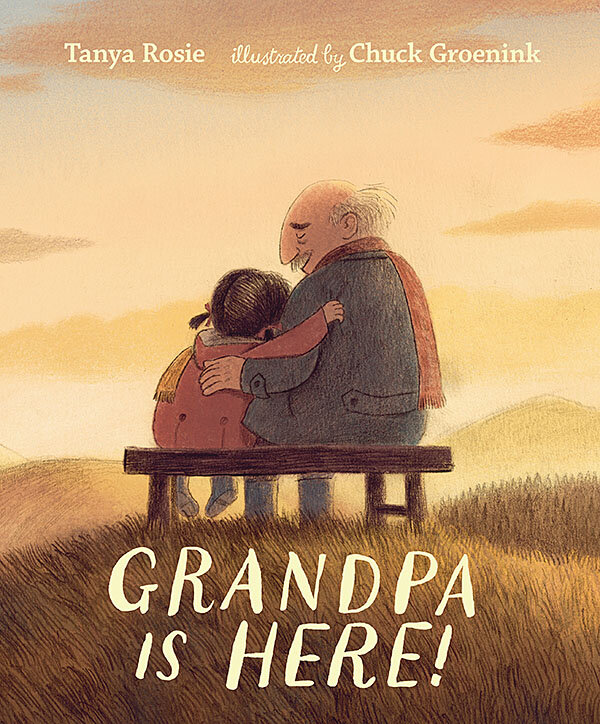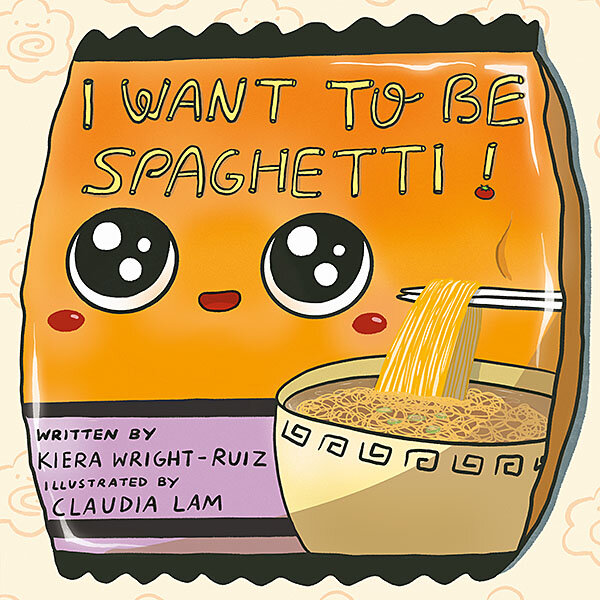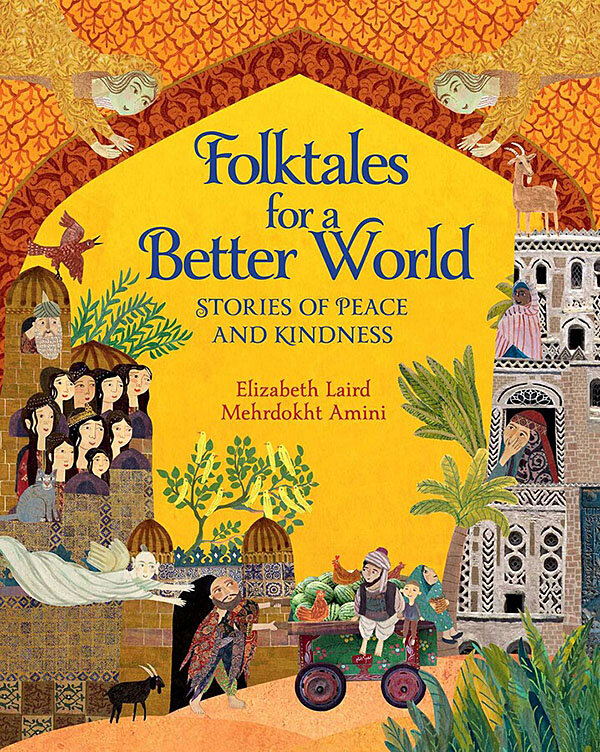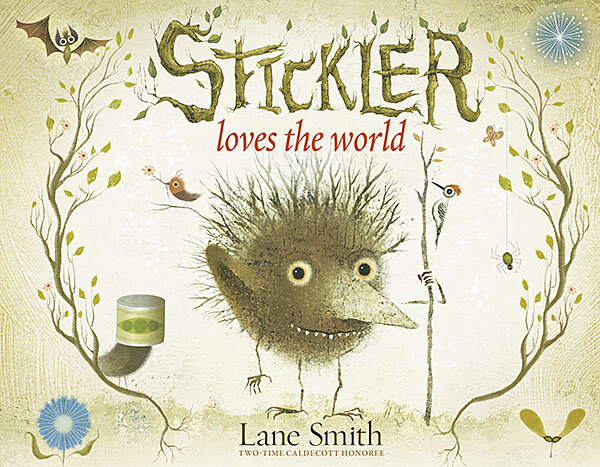Bright colors, warm messages: Kids’ books to read and give
Loading...
A stick creature offers an “alien” a tour of his beautiful corner of the world.
A package of ramen noodles desperately wants to be popular like spaghetti.
A collection of fairy tales from far-flung lands explores cultures and offers unique lessons.
Why We Wrote This
A story focused onEmpathy and joy come from viewing the world through someone else’s eyes. A quintet of children’s picture books celebrates being curious and keeping an open mind.
These reads, and two more, all offer fresh outlooks, different perspectives, and new frontiers to explore. They show the beauty and growth that comes with viewing the world through someone else’s eyes.
They also make the loveliest holiday gifts for the children in your life.
A bond that transcends words
From the colored-pencil illustrations by Chuck Groenink to the tender prose by Tanya Rosie, “Grandpa Is Here!” is a touching tale about grandparents and a heartwarming ode to long-distance family relationships.
When Grandpa finally arrives, he’s brought a suitcase full of Persian spices, herbs, limes, walnuts, and saffron to make yellow rice. His beloved granddaughter, in turn, takes him on a tour of her world: woodland paths and grassy hilltops, friendly frogs and hungry horses. Despite their differences, grandfather and granddaughter forge a deep, special bond. She observes, “We speak different languages, Grandpa and I, but how we laugh and laugh and laugh.”
Quiet and contemplative, this book holds special resonance for readers of all generations who have welcomed family members from abroad. For me, it brought back sweet memories of a visit from Baba, my grandfather who journeyed from Hyderabad, India, laden with sweets and chocolate, to visit our upstate New York home. And for my kids, it’s a living story of regular visits from their Indian grandparents, Dada and Dadi, which include after-dinner romps in the yard and daily lessons in rolling fresh rotis and flaky parathas.
Like our pigtailed protagonist and her kindly, mustachioed grandfather, my kids speak a different language than their grandparents, but their bond transcends words.
Being your own special self
“I Want To Be Spaghetti,” by Kiera Wright-Ruiz and illustrated by Claudia Lam, is for all the kids who want blond hair and blue eyes, a name everyone can pronounce, a packed school lunch that isn’t torbogee or tikki or tamales. In other words, it’s for the kids who want to fit in.
Ramen wants to fit in, too. She wants to be spaghetti. Beloved, popular, beautiful spaghetti. But when Ramen is taken home from the grocery store, bathed in warm broth, and introduced to friends such as Nori, Chashu, and Narutomaki, who join the ramen party, she realizes how great it is to be herself.
Lam’s mangalike illustrations punctuate the story with humor and energy, a refreshing take on the story’s simple, direct message.
“I Want To Be Spaghetti” represents a full-circle moment for the author, who based it on her experience growing up and thinking she looked too different to be accepted. “I hope wherever you are right now that you know this,” Wright-Ruiz says in her author’s note. “You are perfect as you are.”
I hope that my kids – who are growing up in a world more accepting of different skin colors, languages, and foods – know this, too.
Sending readers on a quest
“Books Make Good Friends,” written and illustrated by Jane Mount, is a joyful celebration of books. Centered around a bookish protagonist named Lotti who loves to read but struggles to connect with those around her, this scrapbook-style picture book is packed with delightful surprises. Both my older kids, ages 7 and 10, found the vibrant art, hand-lettered commentary, and illustrated stacks of books wildly fun.
Throughout the book, readers spy Lotti reading a different book in a variety of settings: “Charlotte’s Web” in bed, “The Wondrous Workings of Planet Earth” on a picnic blanket during a hiking break. Like nosy commuters on a train, we wonder what she’s reading. An inset “recommended read” box quenches that curiosity with a sketch of the cover and a summary of the book, inviting readers to search out titles of interest.
My young readers found those stacks irresistible and spent stretches of time scrutinizing every title, exclaiming every time they recognized one.
With its immersive format and prompts for kids to explore different titles, “Books Make Good Friends” sent both my older kids, one an avid reader, the other less so, on quests to find recommended reads.
Every page of this interactive book offers a treat, even the endpapers, which contain a recipe for Lotti’s Friend-Making Cookies, chock-full of oats, pecans, and chocolate. (We tried the recipe together; it’s a keeper.)
Folk tales spread kindness
If “Grimms’ Fairy Tales,” “Aesop’s Fables,” and “1,001 Arabian Nights” had a globe-trotting, peacemaking grandchild, it would be “Folktales for a Better World: Stories of Peace and Kindness,” by Elizabeth Laird, illustrated by Mehrdokht Amini.
This collection of seven stories sweeps the world, offering readers glimpses of kindness and humanity in conflict-ridden lands.
The tales are both instructional and inspirational.
In Sudan, a reversal of fortunes and forgiveness unites an estranged father and daughter.
In Ethiopia, peace between warring clans is achieved only when their pride is, literally, thrown in a river.
In Yemen, an aging sultan chooses his successor with a simple, but revealing, question.
And in Syria, a lion teaches a woodcutter the perils of greed and the meaning of friendship.
Award-winning author Elizabeth Laird’s empathetic and emotional stories, and Mehrdokht Amini’s charming, layered illustrations, weave an immersive read that captivated my 7-year-old, who loved the dramatic stories, faraway settings, and concrete lessons.
For him, it’s become bedtime reading. I hope it helps him dream of a better world.
Eye-opening love of nature
In “Stickler Loves the World,” when an otherworldly, helmet-clad visitor appears in his corner of the woods, Stickler, a woodland creature covered in sticks, decides to show him around.
Stickler takes his alien visitor on a grand tour, rapturously pointing out the wonders of his world:
“Colors, bursting like fireworks! Flowers!”
“Feel it? Wait for it. There! ... It’s like a whisper ... but one you feel ... Wind.”
“Then there are these things dancing for us, falling, spinning, whirling, twirling, around and around!”
Stickler points with glee at a sky full of falling helicopter seeds.
When the visitor turns out to be a crow with a can stuck atop its head that is finally dislodged, Crow thanks Stickler for opening his eyes – literally and figuratively.
Author and Caldecott honoree Lane Smith’s quirky, endearing illustrations bring mystery and joy to the everyday phenomena that we often ignore: fluffy dandelion pappi; soft, cushy moss; reptilian-textured tree bark.
It turns out Stickler, with his delight in the bits and bobs around him, is not unlike my 2-year-old. Reading this book felt like seeing the world through his eyes, where every pine cone, rock, and leaf is a treasure to behold.











